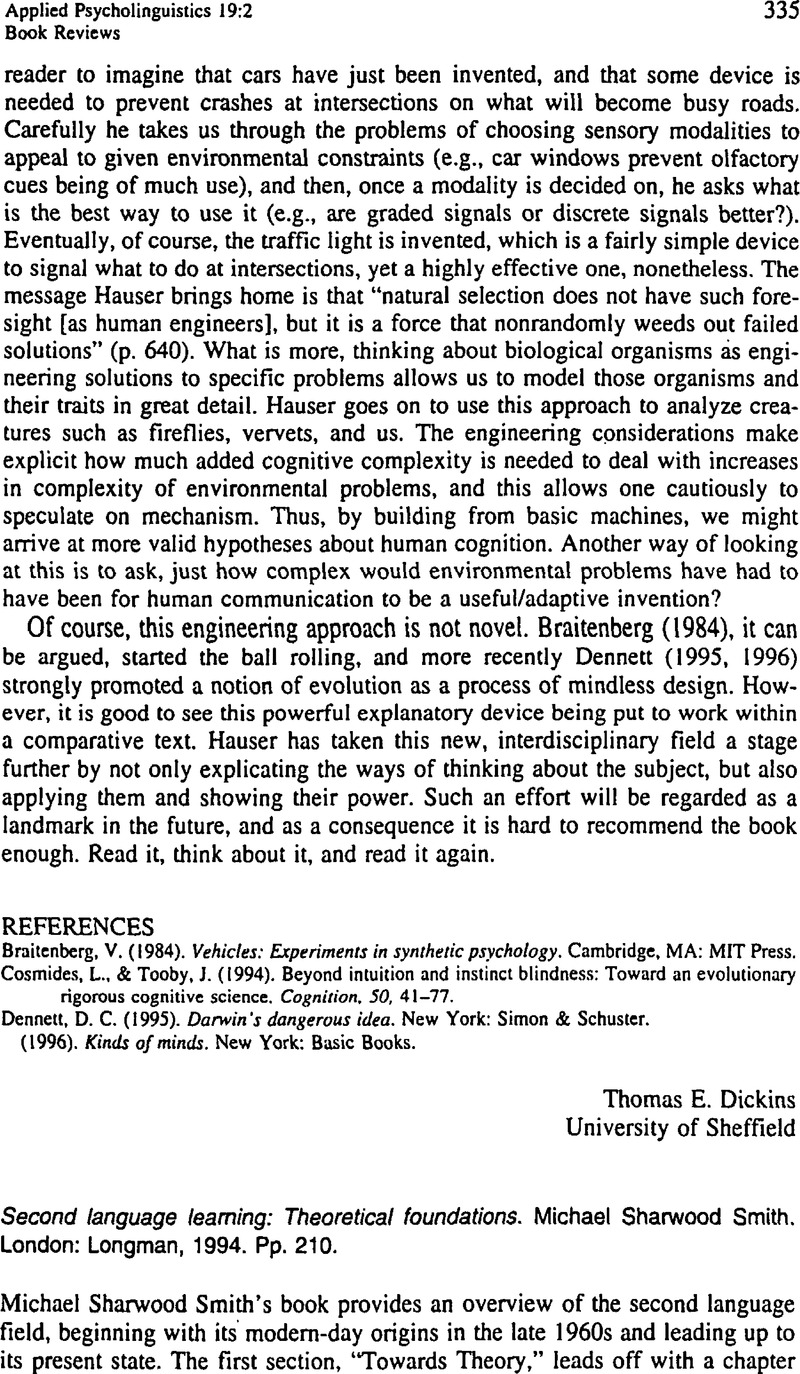No CrossRef data available.
Article contents
Second language learning: Theoretical foundations. Michael Sharwood Smith. London: Longman, 1994. Pp. 210.
Published online by Cambridge University Press: 28 November 2008
Abstract
An abstract is not available for this content so a preview has been provided. Please use the Get access link above for information on how to access this content.

- Type
- Book Reviews
- Information
- Copyright
- Copyright © Cambridge University Press 1998
References
REFERENCES
Adjemian, C. (1976). On the nature of interlanguage systems. Language Learning, 26, 297–320.Google Scholar
Corder, S. P. (1967). The significance of learners errors. International Review of Applied Linguis-tics, 5, 16170.Google Scholar
Dulay, H.Burt, M. (1974). Natural sequences in child second language acquisition. Language Learning, 24, 37–53.Google Scholar
Eckman, F. (1977). Markedness and the contrastive analysis hypothesis. Language Learning, 27, 315–30.CrossRefGoogle Scholar
Krashen, S. (1982). Principles and practice in second language acquisition. Oxford: Pergamon.Google Scholar
Nemser, W. (1971). Approximative systems of foreign language learners. International Review of Applied Linguistics, 9, 11523.CrossRefGoogle Scholar
Pienemann, M. (1987). Psychological constraints on the teachability of language. In Pfaff, C. Wollman (Ed.), First and second language acquisition processes. Cambridge, MA: Newbury.Google Scholar
Schumann, J. (1978). The relationship of pidginization, creolization, and decreolization to second language acquisition. Language Learning, 28, 36779.Google Scholar
Selinker, L. (1972). Interlanguage. International Review of Applied Linguistics, 10, 20931.Google Scholar
Selinker, L., Douglas, D. (1989). Research methodology in contextually-based second language research. Second Language Research, 5, 93–126.Google Scholar




